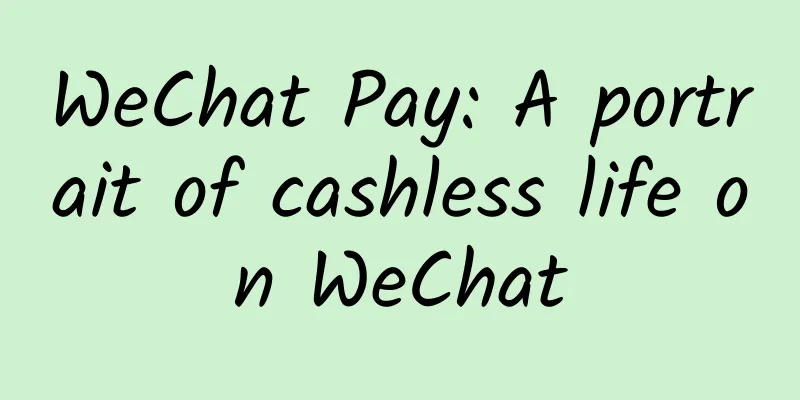WeChat Pay: A portrait of cashless life on WeChat

|
On August 10, WeChat Pay released its first “Cashless Life Portrait”. Based on the WeChat payment data of the past year and the WeChat red envelope data of the past six months, it analyzed the ten cities with the most active WeChat payments, namely Beijing, Guangzhou, Shenzhen, Shanghai, Hangzhou, Chengdu, Wuhan, Xi’an, Shenyang, and Tianjin. It includes the most common consumption places, special consumption, number of red envelopes sent and received, cities where red envelopes flow, and payment age in each city.
Among them, convenience stores are the top consumption places in 5 cities, including Guangzhou, Shenzhen, Shanghai, Hangzhou and Wuhan; except Xi'an, the most frequent consumption places in the other 9 cities include restaurants; and supermarkets are also one of the most frequent consumption places in 7 cities. In addition, department stores and shopping centers are one of the most frequent consumption places in Beijing, Guangzhou and Shanghai; Wuhan, Xi'an, Shenyang and Tianjin like to use vending machines. 2. Shenzhen’s friends like to grab red envelopes the most. Red envelopes flow to Shenzhen from three places. In terms of the number of times WeChat red envelopes are sent and received, Shenzhen ranks first, grabbing red envelopes 10.69 billion times and sending red envelopes 3.01 billion times. Followed by Guangzhou and Beijing, grabbing red envelopes 9.68 billion times and 7.91 billion times respectively. At the same time, Chengdu ranked ahead of Shanghai in terms of red envelope grabbing, reaching 7.25 billion times, while Shanghai was 6.56 billion times. However, Xi'an, Hangzhou, Shenyang, Tianjin and Wuhan are relatively less enthusiastic about red envelopes. In terms of payment age, people born in the 1980s and 1990s are the main force. In most cities, people born in the 1980s still make up the majority of payments, with only Guangzhou, Chengdu and Wuhan seeing payments from people born in the 1990s surpassing those born in the 1980s. In addition, the paying age of consumers in Shanghai, Shenyang and Tianjin is higher among those born in the 1980s than those born in the 1990s, with a difference of more than 10%. Source: Ebrun Power |
Recommend
Huoxiang Zhengqi Tablets
Everyone is familiar with Huoxiang Zhengqi Tablet...
The efficacy and function of white taro peel
Nowadays, our living standards are constantly imp...
What are the effects of eating lotus seeds together?
Gorgon fruit and lotus seeds look similar in appe...
The efficacy and function of Pandanus
There are many kinds of common Chinese medicinal ...
Do hair dyes cause cancer? After testing 16 popular hair dyes, we finally figured it out.
For a long time, hair dye and cancer have been fi...
Condensed matter physicists rewrite "The Theory of Horse" and realize the magical super-molar material
In the field of condensed matter physics, the res...
National Traffic Safety Day丨Comply with laws and regulations and travel safely
The tenth 122 "National Traffic Safety Day&q...
The efficacy of stone touch flower
Stone touch, also known as resurrection grass and...
The efficacy and function of sturgeon
I don’t know if you are familiar with sturgeon an...
The F-35B crashed on the Queen Elizabeth, and the surveillance video was leaked. The British are stupid now.
There is still no conclusion to the incident of t...
What is the medicinal value of pine nuts
There are tens of thousands of Chinese medicinal ...
What are the medicinal values of Fritillaria?
We often see Fritillaria in some medicines. Altho...
Ephedrine Diphenhydramine Tablets
Ephedrine and diphenhydramine tablets are an over...
The efficacy and function of Podocarpus
Recently, major TV channels have launched various...
What are the Chinese medicines for nourishing yang deficiency?
Yang deficiency, many people have kidney yang def...









